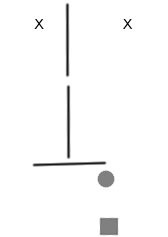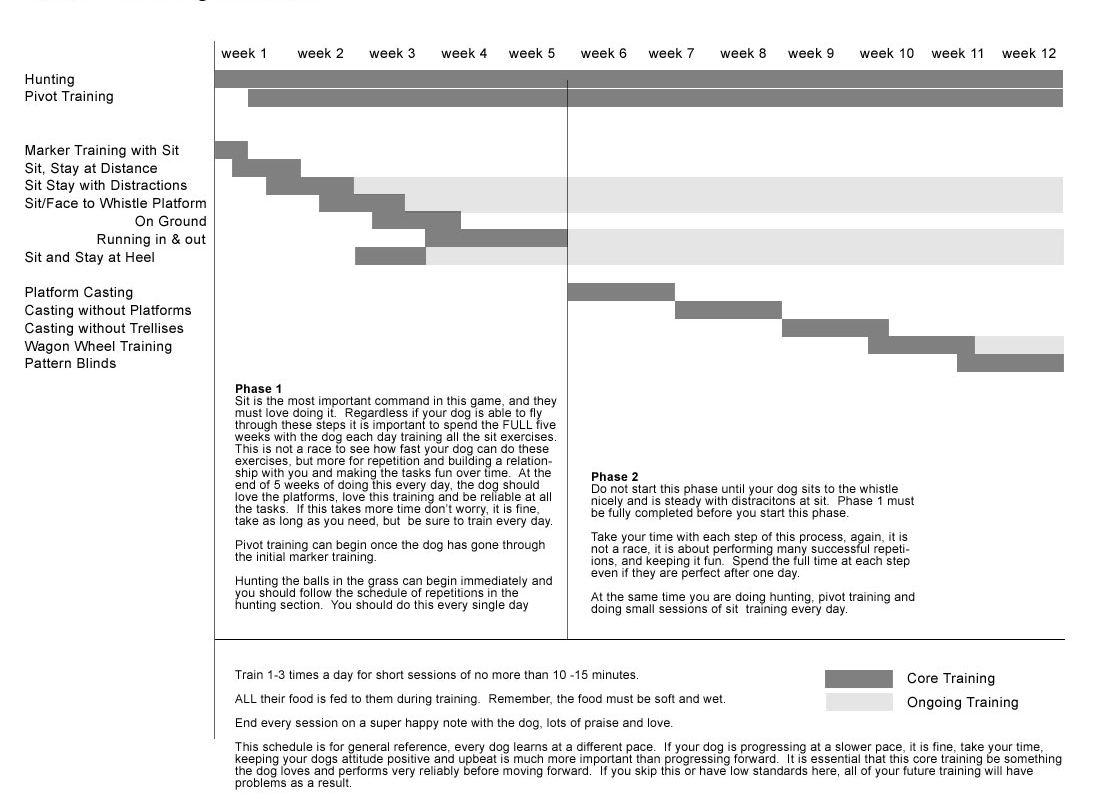Retriever Handling Level 1
By David Borgesen
This document is protected under international copyright protection and any reproduction in any manner is strictly forbidden.
Copyright 2013 David Borgesen
Training Philosophy
Keep it FUN!
There are four things you must never forget about training dogs. If you learn nothing from me today, please do not forget these four things.
- Have high standards and be very consistent
- Have perfect your timing of praise and corrections
- Have lots and lots of patience
- Keep it fun, keep it fun, keep it fun
Keep high and consistent standards, keep your praise and more importantly your corrections perfectly timed, and always make sure you and the dog are having fun. You will ALWAYS get the best results, performance and style when you make it enjoyable for the dog. Always, plan and base your training programs around making the task fun for you and the dog. Be patient, don't compare your dog to other dogs, and measure your success in weeks, months and years, not days.
Have Realistic Expectations
- Drive & Desire
- Hunting
- Nose
- Eyes
- Courage
- Aggression
- Hard or Soft
- Mouth
- Genetics
- Food
- Fitness
- What is the best for your dog
Drive and Motivation
- Building Drive
- Controlling Drive
- Keep momentum the opposite of dogs nature
Difference between Training and Testing
- Don't test your dog in training
- All training setups should be designed make the dog successful, not to test his limits
- Successful repetition will bring the best results, have patience
- Failure and corrections will kill a dogs drive and desire to work
Handling Hand Signals
Level 1
- Wait for My Command (both hands palms out in front of chest)
- Come (both arms straight out to sides)
- 90 degrees left (left arm straight out to left, right hand in front of chest palm out)
- 90 degrees right (right arm straight out to right, left hand in front of chest palm out)
- Back 5 degrees right (right arm straight up, left hand in front of chest palm out)
- Back 5 degrees left (left arm straight up, right hand in front of check palm out)
Level 2
- Back 45 degrees right
- Back 45 degrees left
- In 45 degrees left
- In 45 degrees right
Visibility of Handler
What good is a hand signal if your dog can't see or recognize you?
- Clothing
- Hat
- Gloves
- Towel
- Cards
- Background
- Sunlight
Wear something common in training as you will in a test
Whistle Commands
- Sit and Face You (One 2 second blast)
- Come (Two sharp 1/2 second blasts)
- Hunt (One sharp 1/2 second blast followed by an rising/falling long whistle)
- How to Blow the Whistle Properly
- Distance and Levels
Types of Whistles
- Acme Silent
- Acme 211 1/2 Hunting
- Acme 212 Field Trial
- American Mega Whistles
Field Visibility and Sound Test
- Have each person go to the edge of the field and listen to the group with two branches moving next to their ears.
- Visually observe different clothing and hand signal styles
Core Verbal Commands
Remote Commands
- Sit
- Come
- Hunt/Hledat
- Left
- Right
- Back (from remote sit position go back right or left based on my hand signal) & (reinforcement command to keep the dogs momentum running out)
At the Line
- Heel (when on left side, turn left)
- Ko noze (when on right side turn right)
- Come (when on left side turn right, when on right side turn left)
- Goooood (your lined right where where I am going to send you)
- Birdy (hey, pay attention, birds are coming)
- Bazant (You will be going for a blind)
- Name of Dog (get get that mark)
- Back (go straight out for blind)
When Dog is Returning or Working
- Eh Eh
- Fuj!!
- Hold
- Drop
- Front
- Heel (Left Side)
- Ko noze (Right Side)
How to give verbal commands
- Speak Up
- Be Clear
- Positive Words
- Negative Words
- Short and Simple
- Similar Word Issues
- Commands are not Requests
Positive Reinforcement Marker Training
- Marker
- Food
- Verbal Praise
- Dummy Reward
Corrections, When, Why and Never
- Verbal Corrections
- Physical Corrections
- Indirect Corrections
- Corrections vs. Punishment
- Timing - 1/2 Second or forget it
- Simplify and follow up with success and praise
Sit and Stay at Distance
- High Stand
- Low Stand
- No Stand with Tie Out Stake
- Block Creeping
- Distraction Training
- Guns
- Don't use the stay command
- Praise constantly
Sit to Whistle
If your dog does not stop, turn and face you and sit when you blow the whistle, you can't handle your dog.
Key points:
- Why not to use use the word stay?
- You must train this every single day
- Feed your dog all of his food this training
- Don't forget the marker
- Consistency
- Keep your praise in check
- High Stand Training
- Sit (whistle/sit/treat whistle/site/treat, etc.)
- Sit and Turn
- Low Stand Training
- Sit
- Sit and Turn
- Ground Training
- Sit
- Sit and Turn
- Sit and stay at heel
- Long leash and anchor training
- Harness and Long Leash
- Sit going out
- Sit coming in
- Big reward for sitting every time!
- happy dummy
- marker/food/praise
Platform Casting
By this time, your dog should be jumping on and loving the platform after doing the previous steps, "Sit and Stay" and "Sit to Whistle". In this exercise we are going to teach the dog to cast left, right, back left and back right. This is initially taught without fetching dummies in piles or thrown because any problems with fetching will interfere with this training.
Teaching go to platform
- Give the command "Place" when you motion your dog to sit on the platform
- Step back further and further until you can send your dog to the platform from 5 meters away
- Each time he gets to the platform, blow the sit whistle, marker and run in and treat.
- Transition the treat to a thrown dummy. Whistle, marker, wait several seconds and then throw a dummy, wait several seconds, and send to fetch. Send with his name
Teaching Left and Right Overs

Now that you can send your dog to a single platform with the command "Place", it is now time to cast them left and right between two different platforms.
- Place two platforms in the field separated by 2 meters.
- Send your dog to the first platform with the command "Place"
- Now motion to your dog with exaggerated body language, to go to the other platform. Use the command Place
- Change the command Left and Right. Say the command before you give the hand signal.
- Place will still be used to send out to a platform from your side, but not for left, right, or back commands.
Introduce a third platform
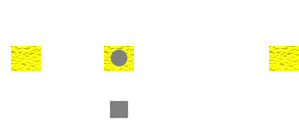
- Add a third platform and send your dog left or right until he masters this, always start from the middle
- If he goes the wrong direction, stop with a verbal correction and bring him back to the platform, move the wrong one further away and try again.
- Keep the momentum brisk, keep it happy, and wait at least 5 seconds when throwing a dummy and he must wait for you to send him.
Teaching Back
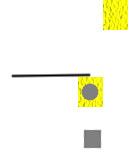
The back command along with a hand signal tells the dog what way to turn and run backwards at a 5 degree angle.
- Position the platforms as seen above
- Place the trellis behind the dog on the opposite side you will send him.
- Now hand signal the dog back, with lots of body motion, happiness, and encouragement. Use the command Place
- If he turns the wrong way, say nothing, let him figure it out.
- If he is successful, same as before, marker, run to him, treat, then transition to throwing a dummy, don't forget to wait before throwing
- Change the command from Place to Back. Slowly increase the time before saying Back and try to influence movement with your body.
- Only give the back hand signal with no verbal command, if he doesn't move, motion again, and if still still add the command. Keep trying until he will go without any verbal command
- Now instead of running to dog, call him to you, and treat
Key Points:
- This is how you feed your dog each day all of his food
- Corrections are verbal only when the dog clearly goes for the wrong platform
- Influence what platform to go to with exaggerated body motion
Cast with dummy in dogs mouth
- Send to platform with dummy in mouth
- Handle to all positions of platforms
- Marker when dog sits, then call him to you, verbal praise only, no food (food will make him prone to drop the dummy)
Casting to all four locations
- Setup the trellises to block the undesired path
- Mix it up and send the dog to all 4 locations
- For backs, make sure you are lined up correctly
- We are still giving the marker, and running in and giving treat or throwing dummy as a reward every time
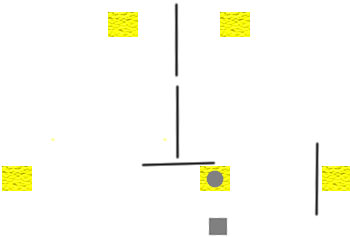
Casting without Platforms
Note: Dog must not be a shopper or swapper before doing this exercise
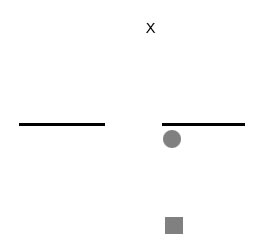
Put a long leash on the dog
Blow the sit whistle before you throw with a verbal sit as well.
In the beginning, after you throw, give the hand signal and back command right away, then progress to waiting 5 seconds before sending.
Always give hand signal first and back command 1/2 second after. Then eliminate the back command and only use the hand signal.
Motion to make the dog sit straight if not facing you directly
If the dog breaks or moves before your signal just step on the leash, give a verbal correction, calmly bring them back to the position and try again, be patient.
- Block the opposite path using trellises
- Stand in the exact position for a 5` angle back
- Switch left and right sides
- Keep the sessions short
- Long leash on at all times
- Extend the distance only when mastered
Back Left and Right Mark with Distraction
In this setup you will throw two dummies behind the dog one after the other and send them for the mark
Left and Right Over
- Leave a pile of dummies behind him in the back position
- Block back positions with trellises
- Throw to left and right side, wait 5 seconds before sending
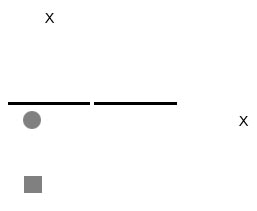
Memory Casting
Up until now, you have been only sending on marks. Now it is time to send only on memories.
- Block wrong position with trellises
- Throw to back left position, throw to right over, and send for back left
- Alternate all positions and always send on memory only
- If a failure, do it again, except throw 2 dummies to memory position
- If still failing, back up your training, make it simpler.
- Always make mark and memory on opposing sides
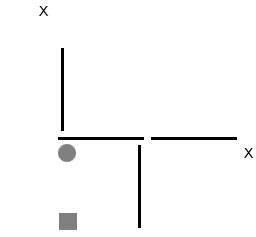
Close Retrieves
You are now ready to really challenge your dog by throwing two dummies on the same side. One as a back right and one as an over right. Don't attempt this until all the above training is mastered.
- Block undesired position with trellises
- Send only on marks until mastered then only send for memories
- Don't forget, long leash is still on the dog at all times
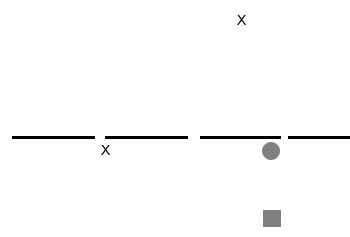
Back Left and Right Memories
Casting with No Trellises
At this point your dog is now handling on a small scale with controls in place to prevent failure. It is now time to remove the terrises. Place three dummies behind the dog on the right side. Send him back 10 times. Now move the pile to the left side, send him back 10 times.

- Move the pile to 90 degree left side, 10 times, 90 degree right side, 10 times.
- Correct a wrong direction turn with your voice and the long leash.
- If he does not improve quickly and keeps turning the wrong way, go back to using trellises.

Casting Drills
- Place three dummies in the 3 positions. Send him for any pile you want. This time you will not repeat any pile in a row. Each retrieve is a different pile.
- Throw to all 3 positions and send to memory
- Throw to all 3 positions and send to the opposite location you think he wants to get.
- Throw returned dummy to the pile where he picked it up from. Send him to same side, but not the same pile. So if you last got an right over, now send for right back.
- Any problems, back up, add trellises if needed, don't rush it.
- Extend distance when all above is mastered.
Remember, at this point, only send your dog for memories
Congratulations! your dog is now a junior handler
Pivot Training
Now we are ready to teach your dog formal lining. This involves teaching the dog to stay in the heel position when you turn left and right. This training can be done at the same time as training handling.
Commands when Lining
- Heel (pivot left - dog on left side)
- Ka noza (pivot right - dog on right side)
- Come (pivot left or right depending on what side you are sitting)
- Goooood (you are lined and looking perfect, get ready to go there)
Commands to Send
- Bazant (its a blind)
- Back (its a blind)
- Dogs Name (its a mark, go get it)
Dog on Left Side
- Heel to turn left and come to turn right
- Moving right leg/knee out means nudge left
- Moving right leg back means turn right
Dog on Right Side
- Ka noza to turn right and come to turn left
- Moving left leg/knee out means nudge right
- Moving left leg back means turn left
Wagon Wheel Training
Note: Dog must not be a shopper or swapper before doing this exercise
4 piles every 90 degrees, send on Back command
When this is mastered, with the dog a heel, throw a dummy 20 meters away, pivot 90 degrees, throw another one, pivot 90 degrees throw another one, pivot 90 degrees, throw another one. Now you have 4 dummies. Pivot 180 degrees and send your dog on Back. When he is very good at this, start turning only 90 degrees and send.
As you progress, extend the distances, mix up the distances of each throw, pivot left, pivot right, pick up the dummy yourself, wait for 5 minutes and do nothing, keep it challenging and different. Remember, never send him for a dummy he wants. Do not handle, use the whistle or your voice, just let him find it on his own. If he gets lost or goes for another dummy, sit whistle and call him back. Start over making it easier for him.
This is a drill you will do for the rest of the dogs life.
Pattern Blinds
Place a pile of dummies on the ground. Walk with the dog 20 meters way. Heel, pivot in the direction of the pile (that can't be seen), and send him on Back command. Now walk another 20 meters and make another pile and then walk back towards the middle. Heel, pivot to the last pile and send. Alternate back and forth. Do not test your dog, make it easy, make him be successful. If he starts hunting too soon, move forward and try again. Blow the whistle once he is within 1 meter of the pile, even if he already sees it.
Note: If your dog is shopping or swapping the dummies, move them further apart. If he still has a problem, do not do any more pile work until the swapping problem is solved.
Hunting a Tight Area
It is said in golf that a great putter will always win the game. I believe the same is true for retrievers. What good is it if you can handle your dog 150 meters to the area if when you tell him to hunt he runs all over the place.
### Important Note ####
At this level, NEVER, NEVER, NEVER give the hunt command other than in this exercise, so no hunt whistle for the next two months... Do not test your dog in training.
Phase 1
- Sit your dog, drop six balls all around your dog within 1/2 meter from him. Walk back a few steps, give the sit whistle, and give the hunt whistle followed by the Hledat command. Do two sessions of 10 times twice a day for 1 week (140 times)
- Place six balls in a small circle. Walk your dog around and then have him sit inside the circle. Step back and give the command/whistle to hunt 10 times a day for 2 weeks (140 times)
- Same as step 2, except put balls under the grass 10x day for 1 week (70x)
- Same as step 3, except reduce to three balls 5x a day for 1 month (150 times)
Phase 2
- Walk with your dog at heel. In your right hand drop an orange ball in medium high grass without your dog seeing it. Walk a few steps and circle back so that the wind does not blow the scent of the ball to your dog. Sit him 1/2 meter from the ball. Walk away, give the sit command, and then the hunt command.
- Alternate where you put the ball, front, side, back, etc, but always within 1/2 meter where he sits.
- Hide 5 balls under the grass in 5 different locations. Mark with stakes. Go to each one, have him sit, walk away and command to hunt.
Training Schedule
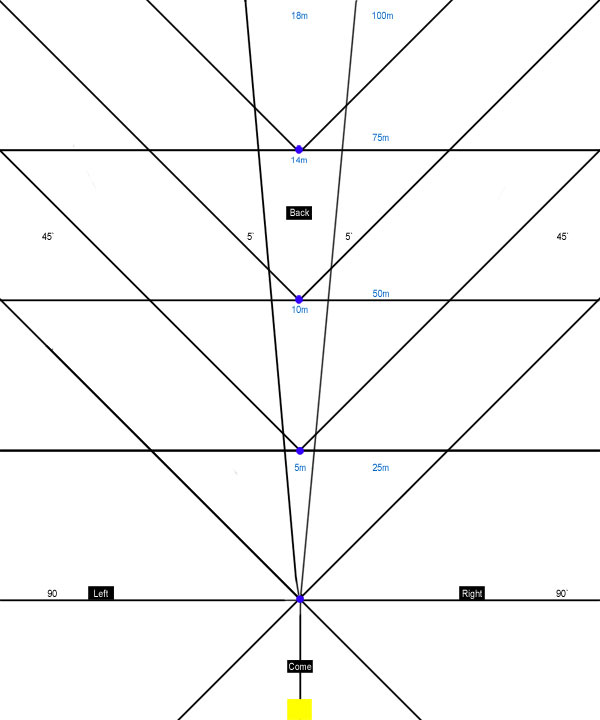
This document is protected under international copyright protection and any reproduction in any manner is strictly forbidden.
Copyright 2013 David Borgesen
